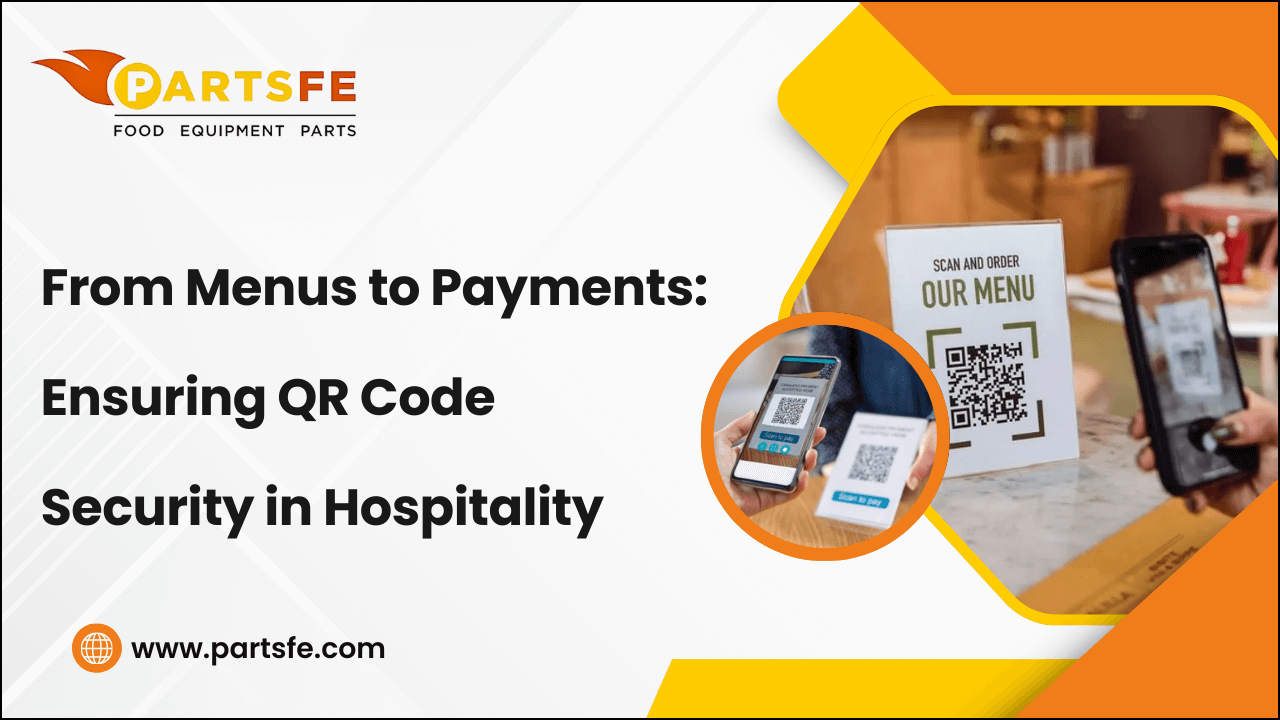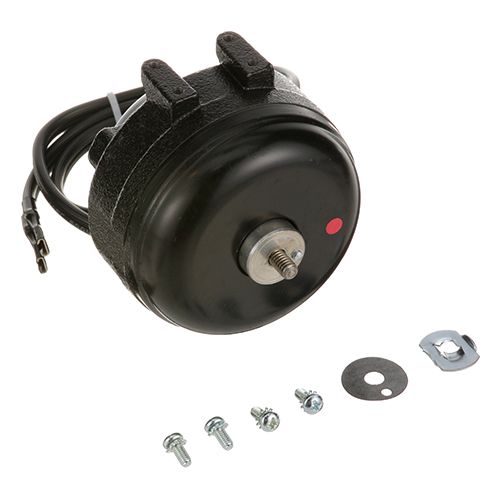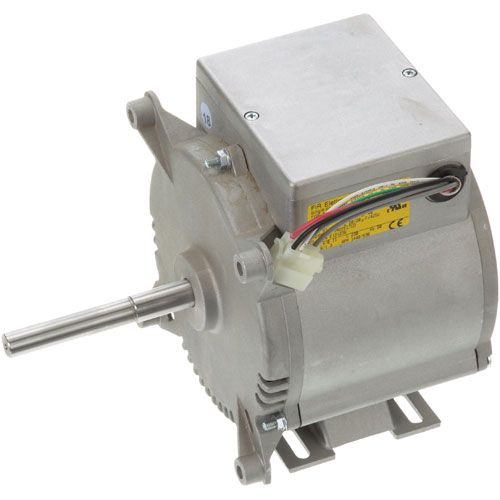From Menus to Payments: Ensuring QR Code Security in Hospitality
QR codes have rapidly transformed the hospitality industry, offering guests a seamless, contactless experience from browsing digital menus to making secure payments. Restaurants, hotels, and cafes now rely on QR technology to improve convenience, speed up service, and reduce physical contact. However, with increased reliance comes a heightened risk of cyber threats. Criminals have found ways to exploit QR codes through phishing scams, fake redirects, and malware attacks, putting both customer data and business operations at risk. As these threats grow more sophisticated, hospitality businesses must prioritize QR code security to protect their guests and their reputation. This article explores common vulnerabilities, security best practices, and how the industry can future-proof its QR code usage for safe, efficient customer interactions.
Understanding the Role of QR Codes in Hospitality
QR codes are increasingly used in the hospitality industry for a variety of purposes, helping to streamline services and improve the customer experience. Initially adopted to minimize physical contact during the pandemic, QR codes have since become a permanent fixture in many hospitality operations.
Key Uses of QR Codes in Hospitality:
-
Digital Menus: Guests can scan QR codes placed on tables or printed materials to view updated food and beverage options.
-
Contactless Ordering: Orders can be placed by customers straight from their mobile devices, reducing wait times and human error.
-
Seamless Payments: QR codes eliminate the need for physical currency and credit cards, enabling quick, contactless payments.
-
Hotel Check-ins and Check-outs: By scanning a QR code, guests may manage their stay digitally and avoid the lines at the front desk.
-
Digital Room Keys: Hotels provide QR codes for room access, enhancing ease and security.
-
Guest Services Access: From spa appointments to room service, QR codes provide easy access to hotel amenities.
-
Promotions and Loyalty Programs: QR codes can link directly to special offers or guest rewards, enhancing marketing efforts.
While QR codes bring numerous operational benefits, their growing use introduces critical security challenges. Businesses must take steps to:
-
Prevent the theft or interception of consumer data.
-
Prevent malicious tampering or replacement of legitimate QR codes with fake ones.
-
Make sure that staff as well as guests have a secure and reliable experience.
Check out our article 2025 tech trends that reshape restaurants to learn how these emerging trends are transforming restaurant operations.
Common QR Code Security Risks in Hospitality
As businesses in the hospitality industry continue to embrace QR code technology, they must be aware of the security risks that come with it. The following are some of the most common security risks related to QR codes:
Phishing Attacks
Cybercriminals often exploit QR codes to redirect users to fake websites that mimic legitimate hospitality platforms.
Risks:
-
Redirecting guests to fake payment portals to steal credit card details.
-
Harvesting login credentials for loyalty or booking accounts.
-
Capturing sensitive guest data such as names, emails, or phone numbers.
-
Appearing indistinguishable from authentic URLs, especially on mobile browsers.
Malware Distribution
When a consumer scans a malicious QR code, malicious software may be downloaded to their device.
Threats:
-
Installing spyware or ransomware on guest smartphones or tablets.
-
Hijacking devices connected to public hotel or café networks.
-
Corrupting business systems if scanned using internal company devices.
-
Accessing private information like saved passwords, financial apps, or browsing history.
Man-in-the-Middle (MITM) Attacks
QR codes used on unsecured networks can be exploited to intercept data in real time.
Threats:
-
Intercepting sensitive payment or login data during transactions.
-
Modifying communications between the guest and the intended service.
-
Exploiting unencrypted connections to steal credentials or redirect funds.
-
Operating covertly on unsecured or public Wi-Fi networks is common in hospitality venues.
Fake QR Codes
Attackers may place fraudulent QR codes over real ones to deceive users.
Security Concerns:
-
Tampering with physical QR code displays on menus, tables, or signage.
-
Linking to counterfeit websites that steal guest information or payment data.
-
Creating convincing clones of branded QR experiences to exploit brand trust.
-
Making detection difficult, especially in dimly lit or high-traffic environments.
Best Practices for Secure QR Code Deployment
To ensure that QR codes are deployed securely in the hospitality industry, businesses must follow best practices that protect both customer data and business operations. Here are some key steps to take when implementing QR codes:
Use Secure Links and Encrypted URLs
Embedding secure, encrypted URLs in QR codes is crucial to preventing data breaches and phishing attacks.
Best Practices:
-
To ensure data encryption, always use HTTPS rather than HTTP.
-
Avoid URL shorteners that hide the destination address unless they’re from a trusted provider.
-
Regularly test and verify QR code destinations for authenticity and security.
-
Monitor domain validity to prevent expired or hijacked web pages.
-
Display the destination domain or a verification message before redirecting users.
Source QR Codes from Trusted Platforms
Reliable QR code platforms often include additional safety measures that help businesses manage and secure their QR deployments.
Key Recommendations:
-
Choose platforms that offer custom branding and domain control.
-
Look for services that provide dynamic QR codes, allowing real-time updates to links.
-
Use platforms with analytics and monitoring features for detecting abnormal activity.
-
Ensure the platform supports encryption and user authentication.
-
Keep your QR code platform software up to date to avoid security flaws.
Regularly Monitor QR Code Usage
Monitoring how QR codes are used allows businesses to catch unauthorized changes, tampering, or suspicious activity early.
Suggested Monitoring Tactics:
-
Track the number and location of scans using analytics dashboards.
-
Set up alerts for unusual activity (e.g., high-volume scans in short time frames).
-
Perform physical inspections to ensure QR codes haven’t been tampered with.
-
Use QR codes with version control so any unauthorized modifications are detectable.
-
Conduct routine security audits to assess risk exposure and take corrective action.
Check out how automation is transforming the core of restaurant operations to support safer, smarter service.
Implementing Two-Factor Authentication for Payments via QR Codes
Payment transactions using QR codes are increasingly common in the hospitality industry. Since they involve sensitive customer data, implementing two-factor authentication (2FA) is essential to ensure secure payment experiences.
What is Two-Factor Authentication?
2FA strengthens security by requiring two different forms of verification before granting access or authorizing a transaction.
How 2FA works:
-
Combines a user's goods (such as a smartphone or token) with something they know (such as a password or PIN).
-
Common second factors include one-time passwords (OTPs) sent via SMS or email, authentication apps like Google Authenticator or Authy, and biometric verification such as fingerprint or facial recognition.
-
Makes it more difficult for hackers to get in, even if credentials are compromised.
-
Creates an extra barrier for unauthorized payment attempts.
Why 2FA is Essential for QR Code Payments
Because QR code payments are fast and convenient, they are also vulnerable to fraud if not properly secured.
Benefits of Implementing 2FA for QR Code Payments:
-
Prevents unauthorized access to payment gateways or customer accounts.
-
Reduces the impact of phishing attacks by requiring a second layer of verification.
-
Increases customer trust in digital payment systems offered by your business.
-
Aligns with PCI DSS and other security guidelines while managing payment information.
-
Discourages fraudulent transactions by making attacks more complex and less appealing.
Best Practices for Implementation:
-
Partner with payment providers that support built-in 2FA options.
-
Educate customers on how 2FA works and why it’s important.
-
Offer multiple verification options (e.g., SMS, email, biometric) to improve usability.
-
Conduct regular security audits of the payment system to ensure compliance.
Educating Staff and Customers About QR Code Security
Technical safeguards are essential, but human awareness is equally critical. Both staff and guests play a vital role in preventing QR code-based threats. An educated staff and customer can greatly lower security flaws.
Staff Training
Hospitality staff are the first line of defense when it comes to QR code misuse or tampering.
Key Training Areas:
-
Recognizing legitimate vs. suspicious QR codes on menus, tables, and signs.
-
Routinely checking QR codes for signs of tampering, including stickers placed over the original codes.
-
Responding to security incidents, such as guests reporting fake codes or phishing attempts.
-
Verifying code links using secure devices before recommending them to customers.
-
Participating in regular security briefings or workshops to stay updated on new threats.
Customer Education
Educating customers empowers them to protect themselves while enhancing trust in your brand.
Ways to Educate Customers:
-
Displaying tips near QR codes (e.g., “always check for HTTPS before entering payment info”).
-
Adding a short verification message on digital screens after scanning (e.g., “this is an official [hotel name] link”).
-
Including QR safety guidelines in welcome materials, table tents, or digital menus.
-
Encourage the use of secure mobile networks or VPNs when making payments.
-
Providing instructions for what to do if a suspicious QR code is encountered.
Also, check out this article on commercial kitchen service technicians to ensure efficiency and overall operational safety.
How to Detect and Prevent Fake QR Codes
Fake QR codes are a growing concern in hospitality settings, where high guest turnover and public access make it easy for cybercriminals to tamper with or replace original codes. Proactive detection and prevention are key.
Use Dynamic QR Codes
Dynamic QR codes are flexible and offer greater control over content and destination URLs, even after deployment.
Advantages of Using Dynamic QR Codes:
-
Remote link updates allow businesses to change destinations without reprinting.
-
Increased security through URL tracking and expiration controls.
-
Scan analytics help detect unusual activity (e.g., scans from unexpected regions or volumes).
-
Easier revocation of compromised QR codes, reducing risk exposure.
-
Enhanced branding options to reassure customers of authenticity.
QR Code Verification Systems
Verification systems help ensure that customers are interacting with authentic, safe QR codes before making transactions.
Effective Verification Strategies:
-
Developing branded confirmation screens that validate official links.
-
Using secure apps or web portals for customers to verify scanned QR codes.
-
Displaying a digital certificate or seal once a QR code is confirmed as legitimate.
-
Implementing customer prompts such as "verify this code at [businessname].com/verify."
-
Incorporating micro QR features or secure patterns that are harder to replicate.
Regular Checks and Audits
Routine inspection and monitoring can help catch tampering attempts early and protect both the business and its customers.
Best Practices for Checks and Audits:
-
Assign staff to perform daily inspections of QR code placements.
-
Physically secure QR codes behind clear covers or use tamper-evident stickers.
-
Rotate or regenerate QR codes periodically to limit exposure time.
-
Use location-specific QR codes to prevent cross-site misuse.
-
Log and investigate any irregular scan behavior, such as spikes in scans at odd hours.
Future of QR Code Security in the Hospitality Industry
As QR codes become increasingly embedded in the hospitality industry, the need for stronger security measures will continue to grow. The future of QR code security lies in adopting advanced technologies like blockchain for secure, tamper-proof transactions and AI-driven systems that can detect fraudulent activity in real time. By following best practices for deployment, incorporating two-factor authentication, and educating both staff and guests, hospitality businesses can significantly reduce vulnerabilities. With a proactive and informed approach, QR codes can remain a trusted, efficient tool that enhances guest experiences while safeguarding sensitive data.
Looking to enhance the security and efficiency of your restaurant? At PartsFe, we offer top-tier parts like refrigeration, fryers, and ice makers to support your operations. From top brands like True, Vulcan, Hoshizaki, and Pitco, we provide reliable solutions that keep your kitchen running smoothly and securely.
FAQs
How can customers verify if a QR code is safe to scan?
Customers should look for branded QR codes with recognizable logos and check the URL preview before scanning. Avoid scanning codes from untrusted or unfamiliar sources.
How can QR codes improve customer experience in hospitality?
QR codes offer contactless access to menus, faster ordering, and seamless payments, enhancing convenience and reducing wait times. They also minimize physical contact, aligning with health and safety standards.
How can restaurants ensure QR code security?
Restaurants can secure QR codes by using dynamic codes, employing SSL certificates, and regularly inspecting physical displays. Educating both staff and customers about potential threats also plays a crucial role.
Can QR codes be used for both ordering and payment in restaurants?
Yes, QR codes can streamline both ordering and payment processes by linking customers directly to digital menus and secure payment portals, providing a seamless experience.











